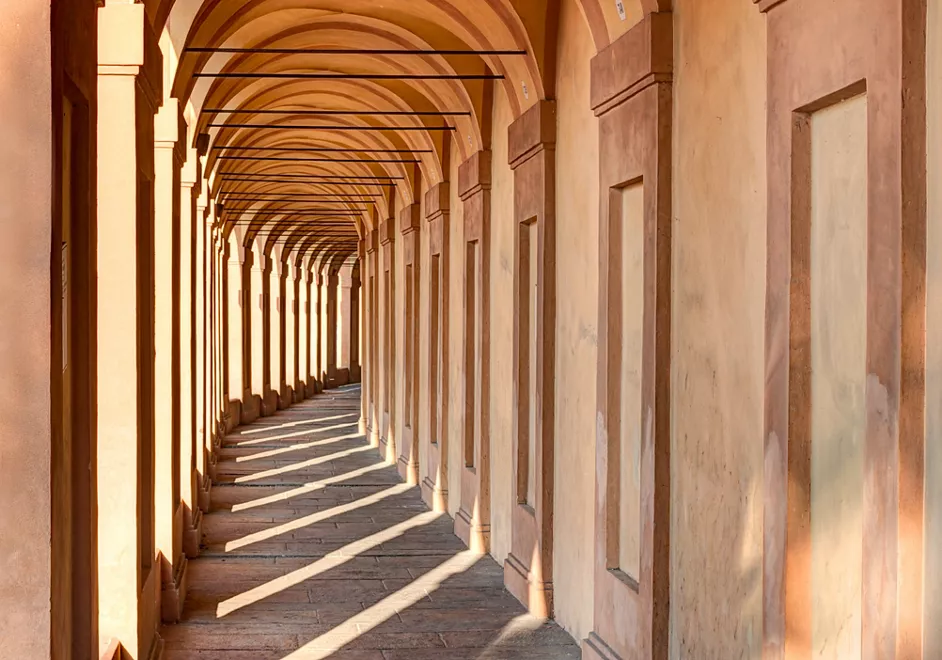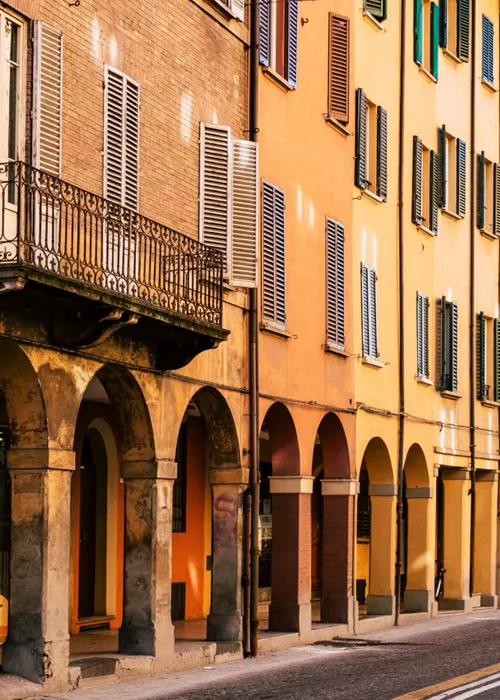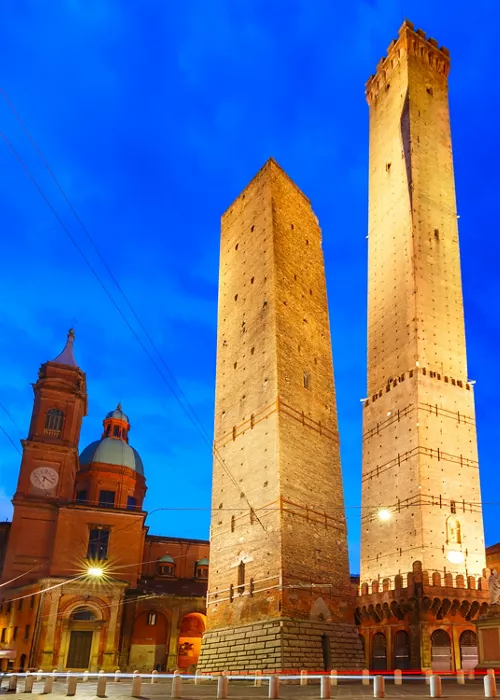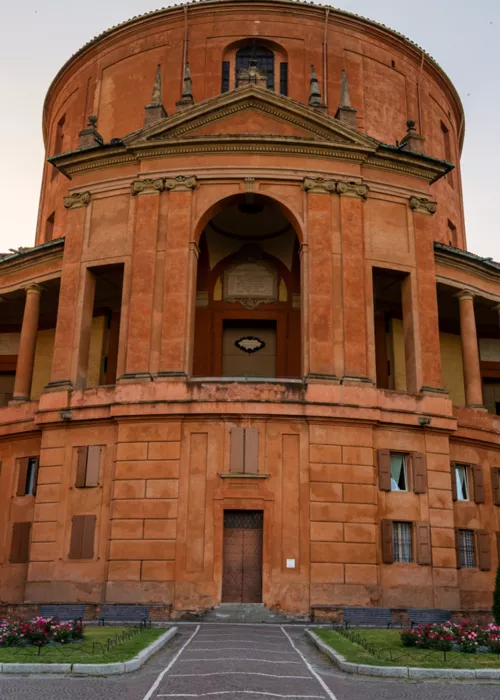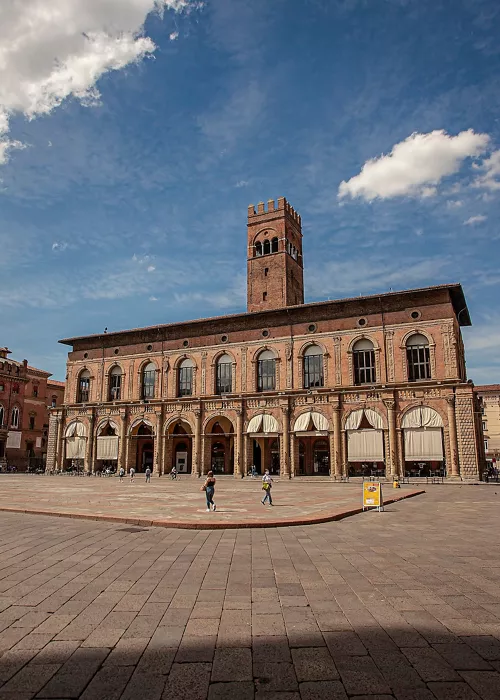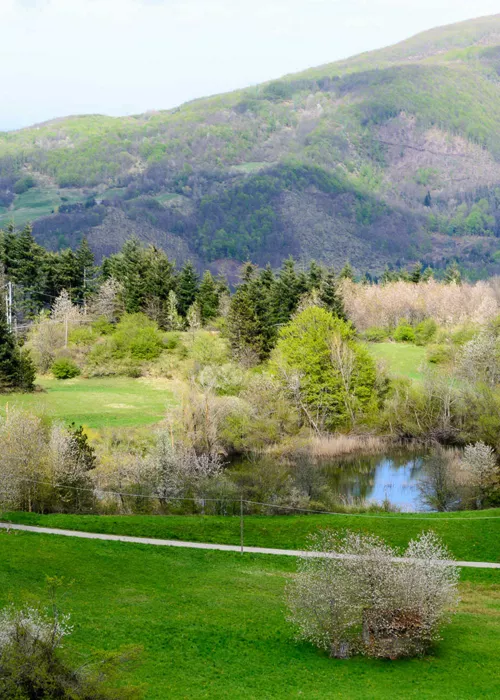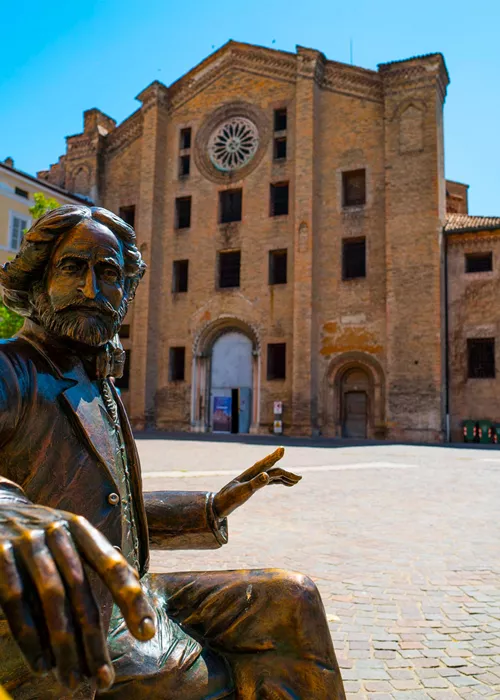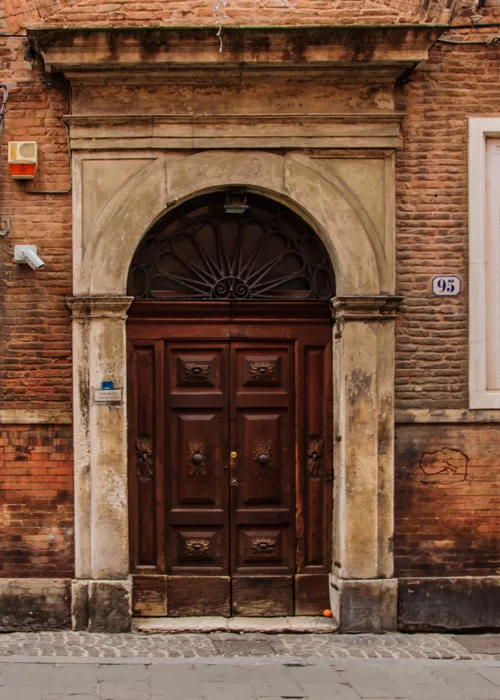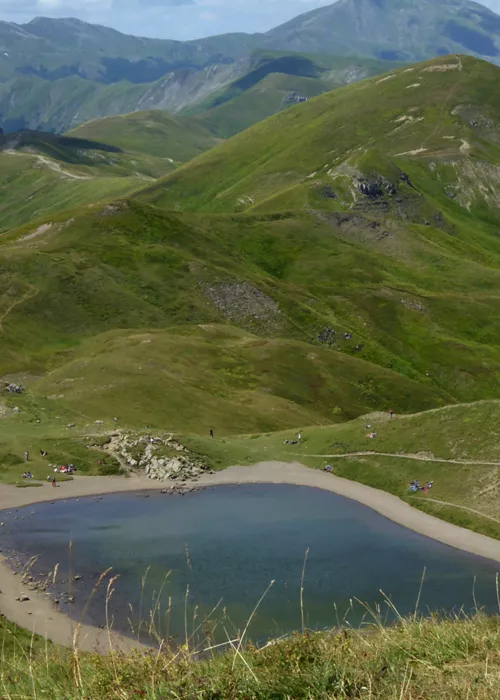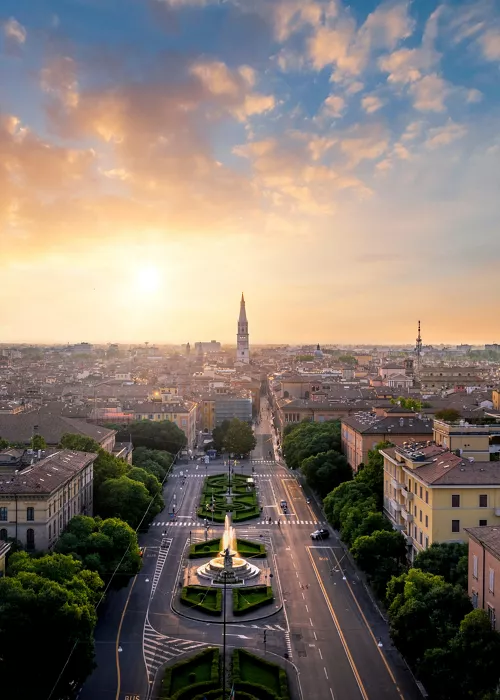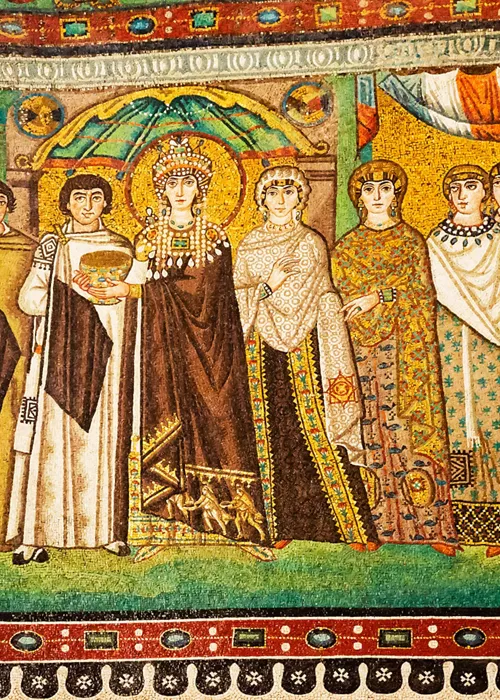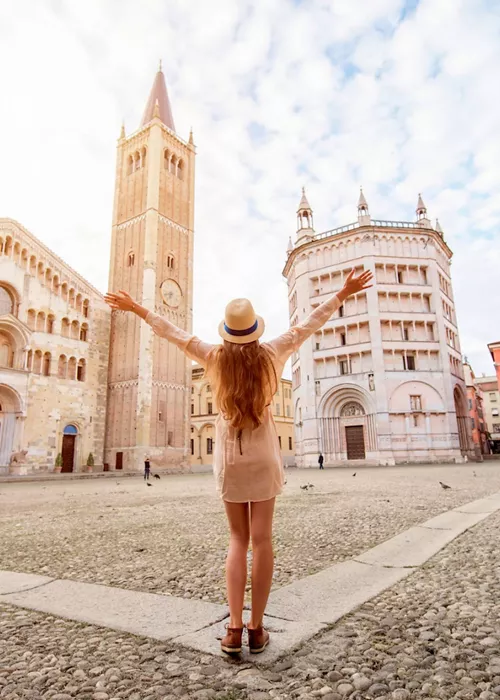The Porticoes of Bologna: a stroll through history
3 minutes
With one of the largest and best-preserved medieval city centres in Europe, Bologna is world-famous for its porticoes, which in 2021 were recognised by UNESCO for their artistic and socio-cultural value.
What are the Porticoes of Bologna and where are they located?
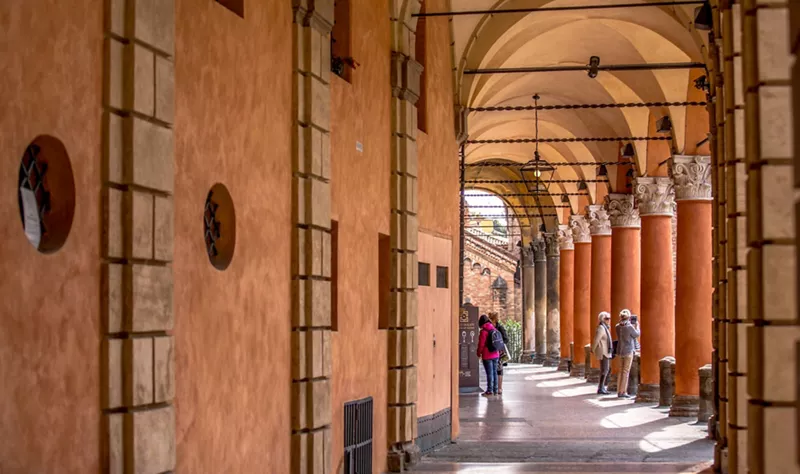
With a total length of 62 kilometres (42 kilometres of which lie in the historical centre), the porticoes of Bologna, together with the city’s towers, are the symbol of the city and have been the most popular social hub of the capital of Emilia-Romagna for centuries.
The most famous and longest portico in Bologna is the Portico of San Luca, at 3,796 metres long, with no fewer than 666 arches, while the Portico Dei Servi, which extends towards Porta Maggiore, holds the record for the greatest width.
Strolling through Bologna’s streets, you find yourself surrounded by these architectural masterpieces, built since the 12th century out of brick, stone or wood.
From the architraved porticoes of Santa Caterina to the porticoes of Palazzo della Mercanzia, Via Santo Stefano and Pavaglione, you can explore from one to the other, enjoying the beauty of a city that has charmed the locals and tourists alike for centuries.
History and information on the Porticoes of Bologna
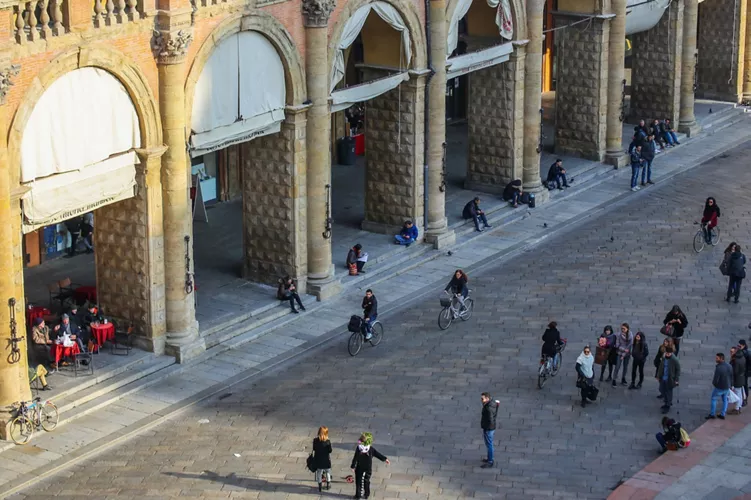
The porticoes date back to the expansion of medieval Bologna, when the opening of the University in 1088 attracted students and academics from around Italy and the world. This sharp increase in population made it necessary to expand the living space and local commercial and artisan activities, without taking away public land and useful city spaces.
The porticoes were the ideal solution, allowing the upper part of buildings to be extended, while offering shade and shelter from the weather. The porticoes, which had sprung up almost spontaneously, were regulated from 1288 with a proclamation that required the addition of porticoes to existing houses and stipulated that new buildings must be built with a portico.
UNESCO recognition
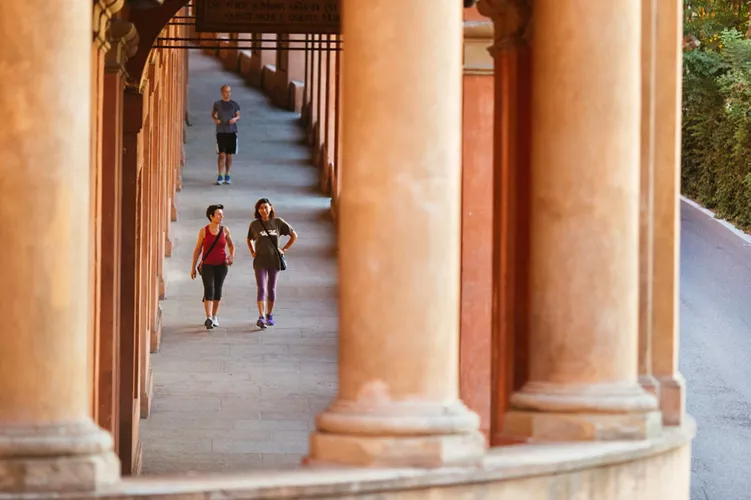
In 2021, UNESCO listed 12 of the most significant sections of the Porticoes of Bologna as a World Heritage Site, recognising them as an identifying element of the city of Bologna.
Cosa vedere tra i portici di Bologna
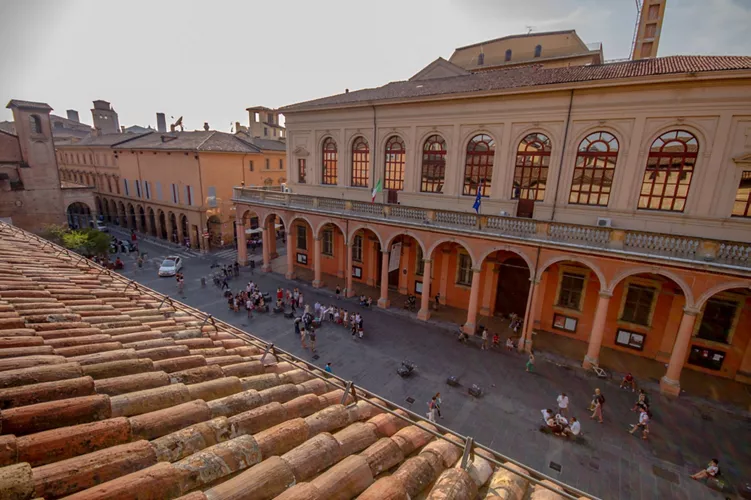
I portici di Bologna sono un biglietto da visita unico per i turisti e un salotto cittadino in cui vivere la città come si è fatto per secoli.
Piazza Santo Stefano, tra le più belle nella città, è un tripudio di portici. Da questo luogo simbolo di Bologna, percorrendo proprio via Santo Stefano, potrete passeggiare lungo gli eleganti portici fino a piazza Santo Stefano da un lato e al Palazzo della Mercanzia, affacciato sulla piazza omonima, dall'altro. Tra caffè e ristoranti qui potete ammirare i diversi stili dei portici di Bologna, dal medioevo alla fine dell'Ottocento.
Da piazza della Mercanzia potete imboccare via Zamboni e proseguire il vostro viaggio nel tempo, ammirando in successione lo stile neoclassico di Palazzo Malvasia, i portici tardo rinascimentali di Palazzo Magnani e le arcate doriche del portico di Palazzo Malvezzi. Lo stesso accade per il tratto dei portici di via Galliera.
Il portico della Basilica di Santa Maria dei Servi è il più largo portico della città, iniziato intorno al 1300 per ospitare i cittadini che non potevano presenziare ai riti religiosi, perché non avevano ricevuto il sacramento del battesimo.
Dopo aver visto il portico più largo dovete correre ad ammirare quello più stretto, nel quartiere Saragozza di Bologna, con appena 95 centimetri di larghezza.
A due passi trovate anche la strada porticata di Santa Caterina, una rara e preziosa testimonianza dell’architettura delle zone popolari nell’età medievale.
I portici di piazza Cavour e via Farini vi faranno stare col naso all'insù per ammirare le decorazioni risalenti alla fine del XIX secolo, mentre il vicino portico del Pavaglione vi lascerà a bocca aperta: è considerato “il” portico di Bologna, un maestoso esempio di arcata bolognese che comprende tratti appartenenti a diversi palazzi.
In zona Santo Stefano, il quartiere più ricco di monumenti, musei e giardini di Bologna, dovete passare per il portico del Baraccano, una grande volta realizzata per volere di Giovanni II Bentivoglio.
I portici di Bologna, però, non si fermano al centro storico.
Il più lungo della città è il portico di San Luca, che da porta Saragozza vi accompagna per quasi quattro chilometri di magnificenza fino al Santuario della Madonna di San Luca, sulla sommità del Colle della Guardia.
Il portico della Certosa di Bologna, collegato a quello di San Luca, risale al periodo napoleonico e ancora oggi è uno dei rari esempi di portico sepolcrale di epoca moderna.
Spazio ibrido tra pubblico e privato, i portici di Bologna godono di quel curioso mix tra mondo e casa in cui è più facile conoscersi, litigare ma anche innamorarsi.

